My two favourite James Bond films.
I love it when James Bond has a laugh. I also love it when James Bond gets serious. Therefore it makes sense that my two favourite Bond films exist at opposite ends of this tonal spectrum. Given there are only two films and five years inbetween the high-camp escapist adventure of 1983’s Octopussy and the hard-edged, bloody thrills of 1989’s Licence to Kill, the swerve in tone is enough to give viewers of the series whiplash. Both films are quintessentially Bond, albeit for totally different reasons, and both are directed by John Glen, who also directed the other three 80’s Bond films, which makes for one impressively versatile range of tones and moods for the series. I’ve loved the 007 films as far back as I can remember, but given that I was born in the eighties, my exposure to the series has been anything but chronological – with no video player, TV was the only option to catch him. In the UK, ITV has always had the monopoly on 007 and the earliest films I can remember being shown are the Roger Moore ones – particularly Moonraker. The Sean Connery ones felt so old-fashioned back then – they were from the 1960s! – so I don’t remember being too interested in them, although I do remember that they weren’t shown so much as the Moore ones, maybe because they’d already had their chance to be regularly screened? In comparison to the admittedly creaky Connery films (well, this is what I thought at the time), the Moore films seemed so much more lively and colourful. The Timothy Dalton films were far too new to be shown on telly and I don’t think I even registered the existence of George Lazenby back then.
Upon acquiring a video player at the start of nineties, I began my acquisition of James Bond films on video cassette. All of the 16 Bond films to date had been re-released for the second time on retail VHS in uniform sleeves that boasted blue and black artwork with a silhouette of Bond on the front (the first run of releases featured grey artwork). Inside that silhouette of 007 was the good old gunbarrel sight, inside of which was the original artwork from that particular film’s poster. Given the size of this gunbarrel, the original artwork was usually heavily cropped – insanely so in the case of Diamonds are Forever or The Spy Who Loved Me. The first two Bond films (and first ever VHS tapes) I acquired were Octopussy and The Living Daylights – guaranteed pleasure in the case of the former and exciting uncertainty for the latter. I had never seen a Dalton film before. Back to him later though.
Octopussy is a sorely underrated film – its title alone is guaranteed to relegate it to the bad end of the Bond polls. You know, the ‘who needs Austin Powers when the original films are funnier?’ kind of thinking. Yet it arguably sees Moore at the peak of his approach to the character of James Bond. His first appearance in Live and Let Die was pretty assured, if a little smarmy – still, a surefire debut. Things got a little awkward with The Man with the Golden Gun – a tendency to slap women about gave things an unsure edge. The Spy Who Loved Me is generally accepted as Moore’s zenith in the role. My reservations about the film itself (as overrated as Octopussy is underrated) can’t hide the fact that Moore is pretty much bang-on in the role. He’s really good in Moonraker too – say what you like about the film, but Moore has by now done what seemed impossible and totally made the iconic role of Bond his own. For Your Eyes Only is really interesting for bringing back some grit and oomph back to the role – what’s surprising is that this tonal shift does prove pretty successful. Moore needed to scale back the frivolity that was in danger of making Bond a little too silly, and he proves here that he has the necessary edge to do this. Yet that film turned out to be a bit of an anomaly, for Octopussy saw Bond back in truly light-hearted territory, and then some. In fact, it would have been the ultimate bow-out for the actor were it not for the reality of A View to a Kill, a personal favourite of mine that nevertheless sees Moore just a few years too old to really convince as a dangerous spy, even if the film itself does have some genuine merits – brilliant score, amazing villains, top action and all. In Octopussy, Roger Moore’s Bond is not what you’d call a professional killer. Oh sure, he offs more than a few bad guys here, but here it’s all part of the fun, and besides he only really kills proper wrong ‘uns. Even a bit when he shoots some soldier point-blank in the head is kind of funny because the soldier in question pulls a hilarious face when he gets hit.
For me, Roger Moore is the ultimate fantasy of James Bond – he doesn’t even need to do any real spying because the script always does it for him, putting him in the right place in the right time, his enemies almost doing him favours at certain points. I can see why fans of the series were getting fed up of Moore’s flippancy and knowingness, but in a film like Octopussy, it’s all just so hard to resist.
The plot of Octopussy is just so much conveyer-belt espionage – this is the one with the Faberge eggs, some of which are legitimate, some are phoney, and it’s usually around the half-hour mark that I forget which ones are which. It doesn’t matter, it’s all just an excuse for Roger Moore to work on his tan (although he does spend a good chunk of the film’s second half stuck in a particularly grey East Germany) and have a lot of fun. The pre-credits sequence is totally unrelated to the rest of the story, and as such is probably not regarded as one of the best in the series, even though we get a ton of spectacular aerial action as Bond leads a heat-seeking missile into the enemy’s flight hangar with a one-man jet. Yes, this is the one with the one-man jet, the one that stumbles to a halt at a petrol station (‘fill er up, please!’), and it’s also the one where Bond can sneak into a high-security base with nothing more than a fake moustache and an uncanny resemblance to the high-ranking official on site. Still, despite Octopussy being regarded as one of the lighter Bond films, it does have some surprisingly dark moments – I know I’m not the only one who found the post-opening credits chase sequence between the killer twins and poor 009 through a forest at dusk to be particularly nail-biting. That and a knife in the back is particularly harsh way to go. However, unlike the future nastiness of Licence to Kill, such brutal deaths don’t send the film on a one-way journey to the town of Darkness Falls. In fact, what follows is the kind of insouciantly entertaining adventure that the word ‘romp’ was designed to be allocated to. The Sotheby’s auction scene with its bidding war between Bond and uber-suave villain Kamal Khan (a spot-on Louis Jourdan) is a ‘how far will it go?’ delight. The first-half escapdes in India are an absolute joy – be it the inventive action sequences (hot coals, sword swallowers, beds of nails, a safari hunt, a deadly yo-yo, it’s all here), one of Bond’s more lovable sidekicks (the affable Vijay Amitraj) and gorgeous scenics.
The second half is visually more drab but scores higher on the tension front – you can’t beat a fight on top of a moving train, or a bomb-defusing sequence, and they’re both here, and both brilliant. Even the coda back in India is seriously spectacular – give that stuntman on top of the plane an award!
Essentially, Octopussy is kind of a greatest hits of Bond – pretty much everything that’s best loved about the series is here. The Cold War villains, the exotic villains, the abundance of women falling at 007’s feet, the wacky gadgets, the doomed sidekick, the silent henchman, the globe-trotting, the smuggling, the freaky pet animal, dinner with the bad guy, the Q scene to end all Q scenes (so much punnery here), a train set-piece, not one but two plane set-pieces, the abundance of humour, the suspense, the near-the-knuckle-for-a-PG violence and of course – John Barry, making his return to the conductor’s podium. Now, I’ve always enjoyed the occasions when different composers have kept his seat warm during absences. Take the hilariously funky Blaxploitation of George Martin’s music for Live and Let Die or the contemporary disco elements Marvin Hamlisch and Bill Conti brought to The Spy Who Loved Me and For Your Eyes Only respectively. However, as much as I love these detours, there’s always that extra tingle of pleasure whenever I see Barry’s name in the opening credits. The man just is the sound of Bond. One thing that these new, all-very-impressive 21st century Bond films don’t have and don’t even come close to having are scores as elegant and seductive as the ones Barry gave us. His music for Octopussy is particularly fine. Sometimes Barry will introduce a new action theme for the series – this goes back to his rousing ‘007’ theme for the Sean Connery era. You know, we can’t have Monty Norman’s brass band score all those chase scenes all the time, can we? The best of these was Barry’s instrumental theme for On Her Majesty’s Secret Service, so good they used it for the credits sequence! A later notable example would be Barry’s terrific score (unfortunately titled ‘Snow Job’) used to accompany the pre-credits scene in A View to a Kill, a piece of music so exciting they understandably use it again and again throughout the course of the film (that’s not to downplay the excellence of Barry’s other action themes in the film).
Octopussy sees a new action theme introduced to the series, a suspenseful and dramatic piece that gets at least three appearances during the film’s more spectacular moments.The theme tune we get – ‘All Time High’ (sung by Rita Coolidge) – is remarkably free of the usual bombast and crescendos of the average Bond song, inevitably becoming rather overlooked as a result, though the writers missed (some would say wisely) an opportunity to truly burn it into the public consciousness by working the title into the lyrics. It’s a pretty, lush ballad – Coolidge’s vocals are admittedly far more anonymous than most singers in the series, but she suits the slinkiness of Barry’s music very well, I must say.
I’ve always taken great pleasure in re-introducing Octopussy to those who’ve always thought it was one of the worst in the series. Initial low expectations are overturned by how much fun the film is, and how funny too. I mean, there’s one-liners, there’s puns, and then there’s what we have here. There’s so many that even I forget some until they appear – ‘you have a good memory for faces’/’and figures’ is one of the most shameless. It’s a two-hour ride of pure fun, and anyone who says otherwise is as fake as one of those Faberge eggs. I forget which one of them is actually the fake one.
Compare all of that to Licence to Kill, an astonishing left-turn for the series that was one or all of the following – a brave attempt to bring guts, gore and darkness to Bond, a shameless attempt to join the Joel Silver league of tough, all-action Hollywood thrillers like Lethal Weapon and Die Hard (they even got late eighties action composer mainstay Michael Kamen for the score) and a point-of-no-return for Bond that divides the fanbase like no other film in the series. Seriously, there are those who rate this as the best and those who rate this as the worst. Me, I love it, and it’s all precisely because of the sheer wrong-ness of watching a series that used to be something the whole family could watch on Bank Holiday Monday turn into something far nastier.
Imagine an episode of Coronation Street where all the characters started saying ‘fuck’ and shagged around. It wouldn’t feel right at all, and yet there would be some perverse pleasure in watching it cross the line. There’s no use of ‘fuck’ or actual fucking in Licence to Kill, but there’s an equivalent sense of lines being well and truly crossed here. Not too far, but further than it had ever been. This is evident right from the off as Michael Kamen’s take on the gunbarrel theme sounds more urgent and intense than in any film of the series. Despite the brutal violence and edginess on show in Casino Royale, that film never felt as dangerous as Licence to Kill does, which was not only the only Bond film to get a ’15’ certificate upon release, but is still the only Bond film that was outrageously threatened with an ’18’ certificate unless cuts were made. And cuts were made. It took a whopping 46 seconds of snips before Licence to Kill even got a ’15’. Utterly unprecedented for the series. It sounds insane, and to be fair, a lot of the BBFC’s decisions back then were pretty insane, but you can almost see the board’s point. There’s a real edginess in Licence to Kill that even plenty of ’18’ rated action films don’t have. It’s all there in the mood. Despite a few laugh-out-loud moments, this is a Bond film that has no time for humour. And yes, even though we know Bond can never die, the world in which he inhabits 16th time around has a deeply uncertain atmosphere. When the film decides to take the usually innocuous, aimable and free-from-danger character of Felix Leiter and feed him to a shark, you know we’re not on safe ground. This fate originally was met upon Leiter in the original novel of Live and Let Die, but such a vicious scene would not have fitted in that old Roger Moore film, so it finally got an airing sixteen years later.
Violence isn’t just on show here, it is the essential drive of the film – with Bond adopting that classic plot motif beloved of hard-boiled action thrillers of its time….revenge. Here, 007 goes on a one-man vendetta against drug baron Franz Sanchez (Robert Davi), who has just enacted his own revenge against the CIA veteran who had him sent to prison. But this isn’t just any CIA guy, this is Felix Leiter – you know, the affable American contact who would get Bond out of a jam in all those earlier adventures of his. True, Bond has been on a revenge mission before – his wife was murdered at the end of On Her Majesty’s Secret Service so there’s at least five minutes at the start of Diamonds are Forever where Sean Connery is beating, chucking, strangling, stabbing and drowning bad guys in mucky gunk with reckless abandon. However, his revenge thread pretty much ends right there and then with the ‘death’ of Blofeld, and isn’t even resurrected when we find out that the world’s most nefarious pussy lover is very much alive. Yeah, Diamonds are Forever is great as a high-camp lark, pretty bloody unconvincing as a follow-on to the most heartbreaking finale in any Bond film ever. Licence to Kill however, takes the revenge staple and runs with it to the extent that the film has the spectre of betrayal, death and violence hanging all over it. Yes, it’s still lively, entertaining and, despite Dalton-haters bemoaning the humourlessness of his era, pretty funny, but even more than the kick-in-the-arse reboot-to-end all-reboots that was 2005’s Casino Royale, this is one Bond film that really uneases.
Let’s take the actual violence, which is pretty gruesome at times. There are at least four scenes which are notoriously brutal – Leiter’s maiming, henchman Milton Krest’s death in the decompression chamber, Dario’s encounter with a cocaine grinder and Sanchez’s fiery demise – all four suffered censorship interference at the time. Despite still being a ’15’ upon release, the violence had nevertheless been relatively tamed for these (and other) moments. Still, you can’t censor mood as efficiently, and as such the film was quite an eye-opener. I think it was Krest’s death that really lingered, a quite outraegeously nasty moment that is all too effectively staged. OK, the make-up effects on Krest’s inflating head don’t look so convincing, but it’s still better than CGI in that we are actually seeing a head blown up and explode. Anthony Zerbe’s performance in this bit is so good that I even end up sympathising with a previously pretty sleazy and unlikeable goon – when people talk about not wishing certain things on their worst enemy, I think this is one of those things. In another comparison to Live and Let Die, this seems to be the exploding death fans were waiting for after the hilariously bloodless dispatching of Kananga in the earlier film. You remember that bit? He literally pops like a balloon, no guts whatsoever. It’s a astonishingly fake moment that borders on Surrealism. No such fancifulness here though – here we get to see the head pop and blood splatter all over the porthole of the chamber. Blimey. Nothing like that had ever been seen in a Bond film ever before. Other scenes almost play out like a bad trip of confusion and shocking brutality- in one scene, Bond wakes up strapped to a table by British and Hong Kong agents, finding himself potentially out of the game only to be ‘rescued’ by Sanchez’s army, who go on to kill all the good guys in a short but nasty explosion of bloody violence – the female HK agent even appears to get shot in each breast, a quick but noticably horrible moment that unsurprisingly got the trim by the BBFC, while the male HK agent bites down on cyanide and his corpse is shot by Sanchez for good measure. This scene would be utterly unimaginable in any other Bond film to date, and it follows that the next moment in the film has Bond wake up as though what’s just happened was a nightmare. Another, earlier and more famously notorious moment is Felix’s shark attack – this was the moment that Bond fans were well and truly made to realise that this wasn’t going to be a raised eyebrow, pun-tastic jolly romp – you can smell the tension oozing from the frame, the knowledge that something very bad is about to happen, and it does. Having the same actor who played Felix in Live and Let Die is a clever move – the film’s literally taking an old-school symbol of good-hearted Bond charm and feeding it to a Great White.
There’s also pretty satisfying violence like Dario’s more-than-welcome death by mincer. Seriously, Benicio del Toro’s performance in the token henchman role just oozes slime. He’s got a killer wonky smile (used to great effect twice during the barroom sequence). The guy’s an absolute scumbag, and he conveys a hell of a lot without actually committing much violence. Most of his most repulsive behaviour takes place off-screen, and when we do see him take on Bond or Carey Lowell’s tough-as-nails CIA pilot Pam Bouvier, he’s almost hilariously ineffective. Yet those early scenes, and the sadistic relish he delivers the infamous line ‘don’t worry….we gave her a nice honeymoon!’ in reference to the woman he’s just murdered (and we can only presume raped by his choice of words, another unexpectedly grim over-the-line direction for this series) make Dario a most repellent villain. He even spits on Bond at one point – seriously, the man has no class. Yet he clearly loves his boss Sanchez, so the man’s not entirely without heart (even if he does like to remove hearts himself) – in fact, amidst the sound of chopped up body parts and screams, you can make out that ‘Sanchez’ is the last words Dario ever says as he disappears in a cloud of red mist, the bastard. Speaking of satisfying violence, wait for the end, there’s more, and I’m not just talking about the shamefully hilarious dispatching of too-outspoken-for-his-own-good third-tier lackey Truman-Lodge.
Oh yes, I’m going to right out and say that the finale to Licence to Kill is absolutely the best in the series.. Dalton bookended his tenure as Bond with my favourite pre-credits sequence to any Bond film (The Living Daylights boasts a totally gripping intro) and my favourite final showdown too. Making the most out of the sun-scorched hills, LTK boasts a terrific chase sequence between oil tankers (surely a first? I know Mad Max 2 featured a single oil tanker, but it never blew up, chiefly bcause there was never any bloody oil in there in the first place) that does what we want a chase between oil tankers to feature. Big bloody explosions. Even when the good guy and bad guy are no longer on the tanker, the film still works out a way to set its villain on fire, and then some.
The final moment between Bond and Sanchez is one of the most unpleasantly satisfying in the series. You know when bad guys stall their intended dispatching of 007 only for our hero to gain an advantage? Well, the same thing does admittedly happen here – Bond is dragged by a machete-wielding Sanchez to a rockface for the final kill when said kill could have just happened right there and then, but I believe Sanchez wants to stage this protracted final moment just to really rub it in. His final words – ‘You could have had everything‘, coupled with that ever-so-slightly superior look of condecension – is the salt in the wound, but Bond’s surprise reveal of the lighter, the same lighter that Felix and Della gave to him on their wedding day, the lighter with their message of love to him on it, together with the equally devastating ‘don’t you want to know why?‘, is just the most intense pay-off of any Bond film ever. No quips, no jokes, no nothing. The lighter is ignited, and a petrol-doused Sanchez goes entirely up in flames, a hideously ugly death if ever there was one. You almost feel sorry for the guy, especially when he goes down on his knees. I’ll give Licence to Kill this, death is horrible no matter who it’s happening to. There’s no gleeful dispatchings here. Bond retreats, but get this – he looks back – just before Sanchez and the nearby crashed oil tanker go up in one huge explosion. GQ magazine made a point in their appreciation of the Dalton years a while back that Bond actually appears to retch at everything that’s just happened, and I’m amazed I never noticed it before.
Okay, so the end spoils things somewhat with that utterly misjudged shot of a chirpy Felix bantering down the phone to Bond, but to be honest, I was just happy for some respite after all that intensity. As for the winking fish, well, I just don’t know what to say about that, I really don’t. We also get a not-remotely-Bond-like-at all power ballad to close things, a quite attractively glossy love song called ‘If You Asked Me To’ by Patti LaBelle, which doesn’t feel very 007 but does feel slightly Licence to Kill-ish with its more American-than-usual tone.
The good guy/bad guy divide is still pretty clear-cut in this film – Bond’s definitely the hero, Sanchez is most definitely not – but Licence to Kill nevertheless does a good job of ever so-slightly muddying the waters, making Bond almost ruthlessly tough and way more resourceful and intelligent than he’s been for some time. Let’s not forget, Bond pretty much manipulates Sanchez into killing more than half of his crew, although one of them was legitmately betraying him (stand up, Heller – thats right, stand up and get yourself IMPALED on a fork-lift truck, definitely one of the most bizarre deaths in the series). The bit when Krest dies is witnessed by a near impassive Bond (though even he does seem to acknowledge the sheer fucked-upness of his eventual demise with that slightly freaked-out look in his eyes) who just watches his plan unfold. Still, let’s not overdo the coldness of Bond in this film – he’s not exactly dealing with the Samaritans here, these are vicious, nasty bastards! Sanchez on the other hand, threatens to be more charming and adept with a post-mortem one-liner than the original ladykiller himself. I guess this is what people didn’t like about Dalton, that he didn’t say zingers like ‘launder it’ in regards to a chunk of money that’s covered with chunks of exploded head, or ‘time to start cutting overhead’ before killing an expendable idiot, both of which were spoken by the villain! Bond does get a few pay-off lines, but they’re definitely more driven by emotion (chiefly anger) than by any attempt to be witty. Either way, the dynamic between these two is definitely the most intriguing between hero and villain in any film in the series – their scenes together, especially given that we know Bond’s agenda, crackle with tension.
I’ve emphasised the edginess of Licence to Kill more than anything in this piece because that really is its outstanding feature, but lest we forget the film is also thrillingly entertaining too – the action scenes are the best director John Glen has given to the series – that afore-mentioned oil-tanker finale is an extended set-piece that any stunt co-ordinator and pyromaniac would be proud of, the opening capture of Sanchez is so audaciously nuts you’d be tempted to slag it off for its preposterousness were it not for the fact that we can see it all play out before our very eyes, and then there’s the mid-way, one-man escape from Krest’s boat, a brilliantly staged, wonderfully scored thrill-ride that sees Bond jump overboard, take on bad guys underwater, hitch a ride onto a moving seaplane which then takes off into the skies, throw both on-board lackeys off and come out of it a multi-millionaire! Not too shabby, and even Bond has to crack up at the sheer insanity of it all, laughing like a boy who’s just got that extra birthday present he didn’t know was coming.
There’s also the quotability of the 80’s dialogue, of which ‘we’re Hong Kong narcotics, you BASTARD!’, ‘switch the bloody machine off!’, ‘you earned it…you keep it…old buddy’ are just three of the most satisfying. There’s also Q – remember Q, lovable Desmond Llewellyn? Insanely, in the midst of all this madness, Q is given his largest role ever, getting to tag along for the ride (uninvited, it must be said) and being more proactive than he’s ever been before or since. Still, such is the dangerous climate of this particular 007 mission that I feared for even Q’s life, and I’m really, really glad the film didn’t decide to feed him to a shark as well. I guess you can take or leave Wayne Newton as sleazeball con-artist Professor Joe Butcher, whose telethons are a cover for various drug cartels to publicly negotiate their deals, but he’s also a bit of comic relief in a film that for some sorely needed it.
Overall though, the mood in Licence to Kill is edgy, and by the end I’m left exhausted – in a good way. It’s a two-hour plus film, and there’s a real sense of an adventure (well, a vendetta at least) well and truly lived through and experienced. This isn’t an in one ear, out the other Bond film – it’s a proper thriller, and a fascinating detour into darkness for a series that always flirted with real danger but never crossed the line. For many though, crossing the line was too much – even though a gritty Bond is something we all accept and love these days with the still-present Daniel Craig era, back in 1989 it proved too much for some, with Licence to Kill remaining one of the most frustrating entries in the series for fans. Even though it recouped its costs, LTK is often regarded as a box-office failure. Its shuffling for space in the utterly crammed blockbuster summer of 1989 left it on the sidelines (no Bond film has been released in the summer since), its restrictive certification of ’15’ in the UK blocked out a fat chunk of the potential audience and the general consensus that Bond was old-hat, as well as all the legal troubles surrounding the series afterwards (resulting in the longest gap between Bond films ever) only emphasises the suspicion that this film temporarily killed the series. Licence to Kill does feel like the last of the classic Bonds – everything afterwards, for better or worse, were definitely more post-modern, with the Brosnan era resulting in one of the best Bond films ever (Goldeneye) and one of the worst (Die Another Day). Now we’re in a whole new era of Bond films, the first of which (Casino Royale) even felt like it was terminating the legacy of everything that preceded it, with totally thrilling results. Weirdly, we’re now at the stage where it looks like everything has been set in place for a revival of all the old Bond traits (Q, Moneypenny, a male M), so who knows where we’ll end up. One things for sure, we probably won’t go as far into the abyss as Licence to Kill did, which is why that film will always remain the black sheep of the series. But to quote Bart Simpson, Licence to Kill showed everybody what a black sheep could do.
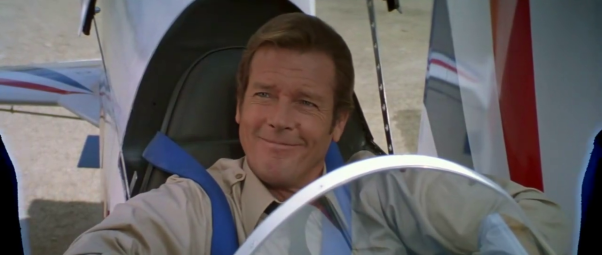
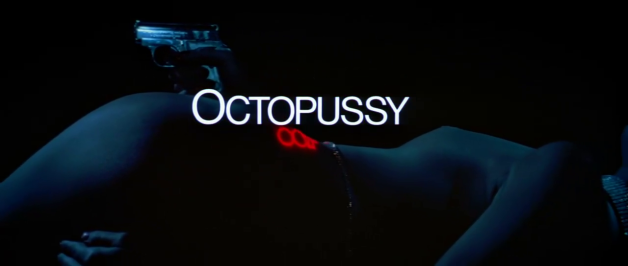
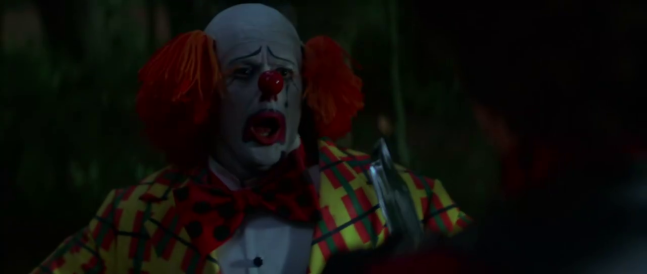
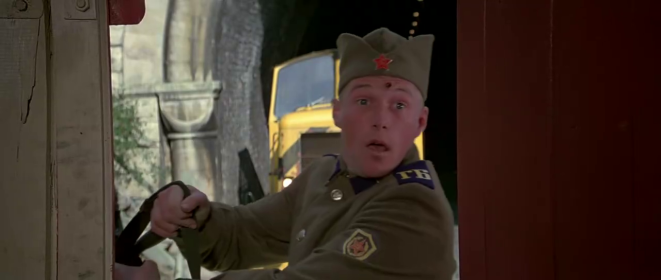

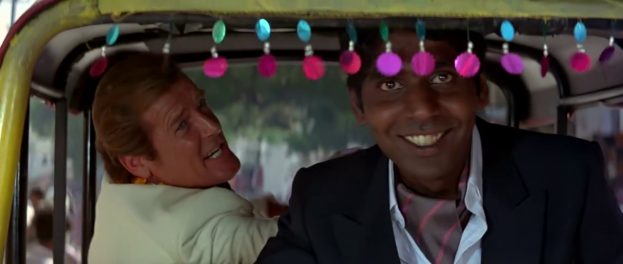

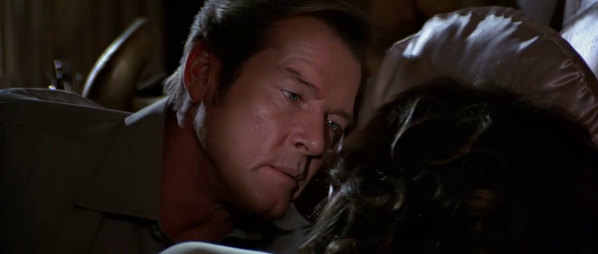
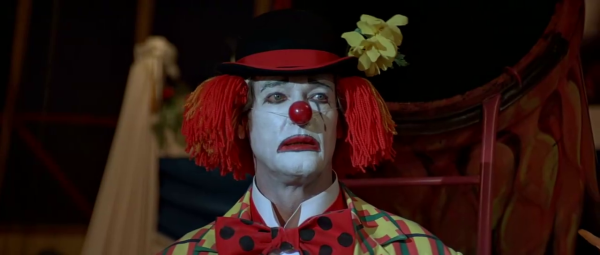



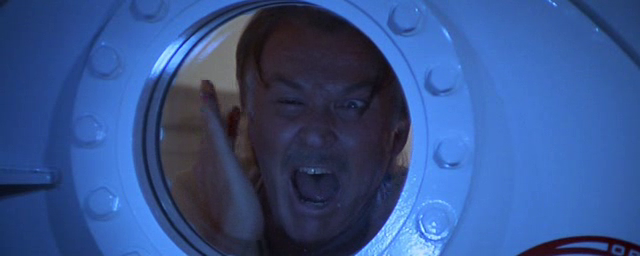
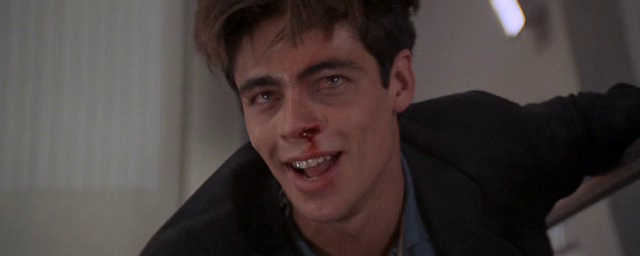
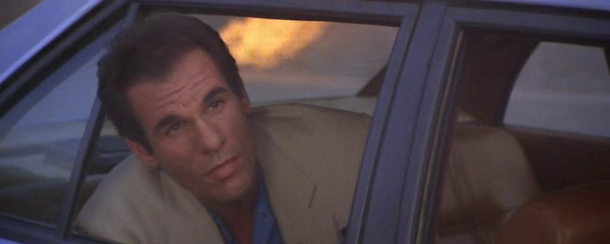
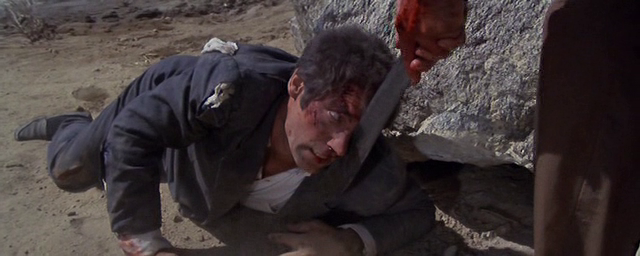

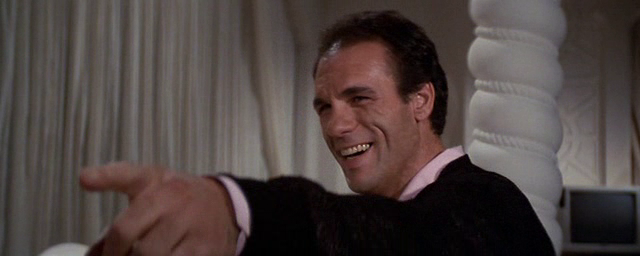
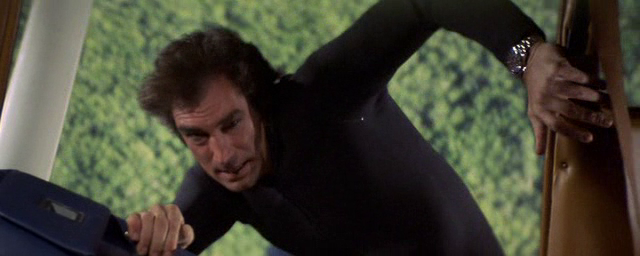
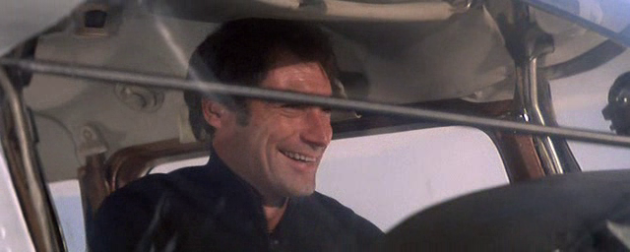

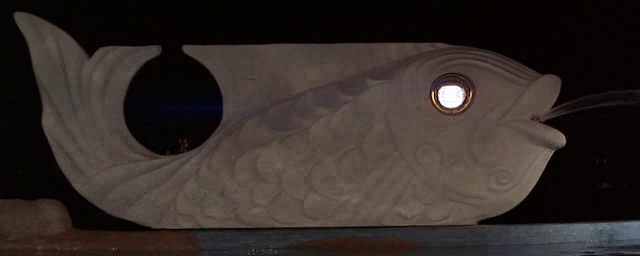
Pingback: Lucky Thirteen: An All Time High for Roger Moore’s Bond in Octopussy – Fletch Talks